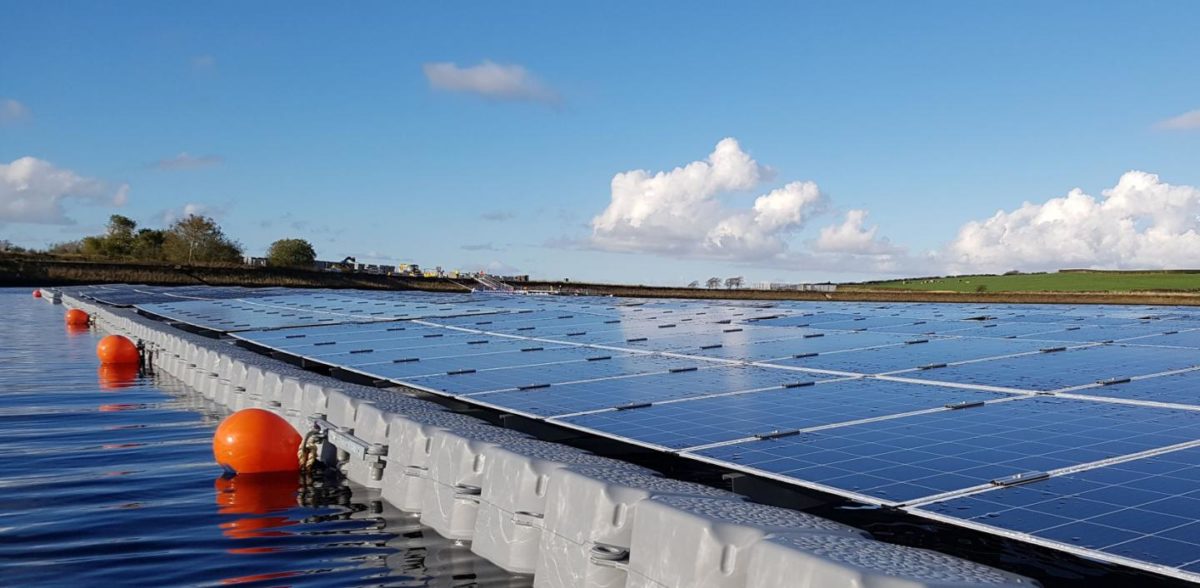Scientists from Lancaster University and the University of Stirling in the United Kingdom have conducted a series of simulations to assess the environmental effects of floating PV plants on bodies of water.
In the paper “Floating photovoltaics could mitigate climate change impacts on water body temperature and stratification”, published in Solar Energy, the UK researchers explained that their approach was intended to assess both the positive and negative environmental consequences of floating PV deployment, as well as identifying scientific evidence of its impacts.
The academics simulated the effects of floating PV installations at a test lake in North West England, which they described as a typical monomictic, mesotrophic, deep and temperate lake. “We simulate water temperature, mixed depth and stratification timing to determine the sensitivity of a lake’s thermal structure to floating PV deployed at varying scale,” they explained. “We then consider the potential ecosystem consequences and implications for lake management in a changing climate.”
Their modeling was based on a one-dimensional process-based model, known as MyLake v1.2, which is commonly used to simulate the daily vertical distributions of water body temperature, evaporation, and instances of ice cover. The model was calibrated for a one-year period against observed water body temperatures.
Cooling
The simulations showed that a floating array can have a significant cooling effect on water and that this effect is higher when the floating array occupies a large portion of the water basin. “As many metabolic processes are highly temperature-dependent, the deployment of floating PV at large coverages has the potential to change the functioning of lentic ecosystems by modifying animal behaviour, food web dynamics, life histories, species interactions and carbon cycling,” the study notes. “Reduced water temperatures may also present operational challenges, particularly to networks comprised of cast iron distribution mains.”
Furthermore, the researchers ascertained that, combined with the reduced wind speeds caused by the PV installations, the lower water temperature favored the formation of high surface coverages. “This considerable temporal shift in ice cover regime may have implications for cyanobacterial community composition and fish behaviour while enhancing cultural ecosystem service provisioning,” the researchers specified.
Undesired effects
If the cooling effect of the PV plant on the water is considered a positive factor by the UK group, as it mitigates blooms of toxic blue-green algae and increased water evaporation, which are both caused by global warming, they also warned that colder water may result in a reduction of the duration of so-called thermal stratification, which they described as the formation of distinct layers of water at different temperatures. “This tends to happen more in the warmer summer months and can result in the bottom layer of water becoming deoxygenated, which deteriorates water quality – an obvious issue for supplies of drinking water,” they emphasized.
“There are also real risks of detrimental impacts, such as deoxygenation causing undesirable increases in nutrient concentrations and killing fish,” research co-author Giles Exley said. “We need to do more research to understand the likelihood of both positive and negative impacts.”
Size
The right proportion between the surface occupied by the PV array and a water surface's total area would be key for addressing all of the above-mentioned potential issues.
The researchers found that floating projects with low surface coverages had a negligible effect on the thermal structure of the water, while projects with large portions of water covered were found to be major disruptors of the lake's archetypal thermal structure. “Appropriate design and deployment of floating PV will be required to mitigate the likelihood of hypolimnetic anoxia and to optimize changes in the composition of phytoplankton communities as floating PV modifies lake thermal structure and light climate,” they concluded.
This content is protected by copyright and may not be reused. If you want to cooperate with us and would like to reuse some of our content, please contact: editors@pv-magazine.com.




This technology seems to be more suitable for offshore solar installations, where sufficient space can easily be found for GW scale solar deployment.